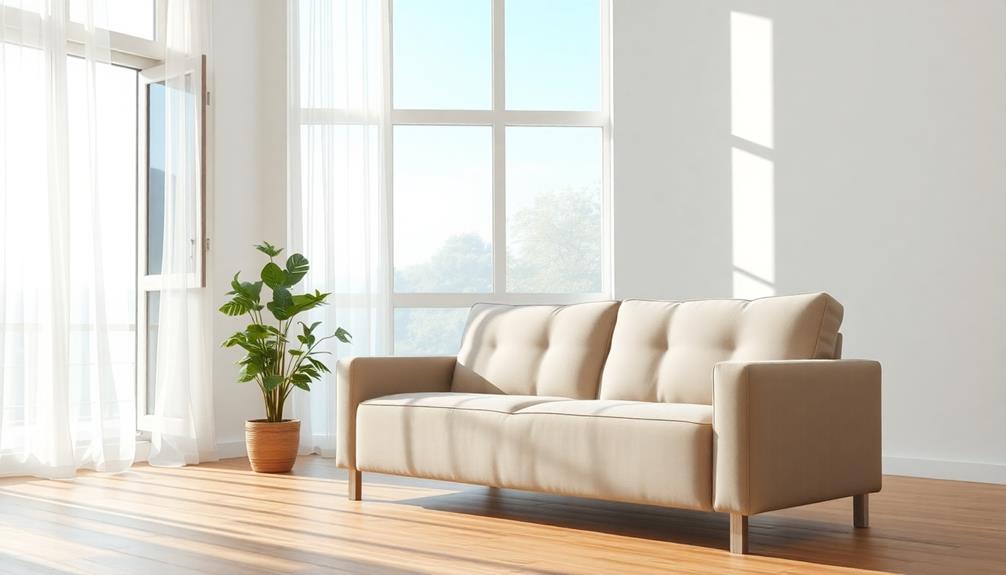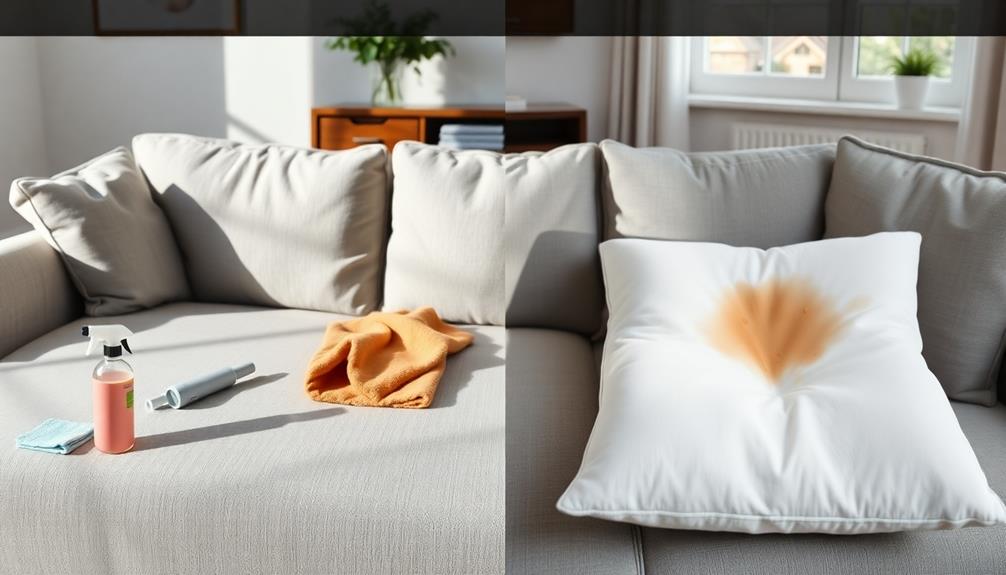In order to accelerate the off-gassing process of your new furniture, begin by placing it in a well-ventilated area. Utilize fans and open windows to enhance air circulation, facilitating the release of volatile organic compounds. Consider dismantling furniture pieces such as bed frames to expose more surface area to the air. If possible, use heat sources to expedite the off-gassing process. Activated charcoal can also be effective in absorbing odors and VOCs. By following these steps, you will create a healthier indoor environment more quickly, and there are additional strategies you can explore to simplify this process. One option is to place houseplants like snake plants and peace lilies in the room, as certain plants are known for their ability to purify airborne toxins and improve air quality. If you discover that some pieces of furniture still emit strong odors despite your efforts, you may consider selling them. In such instances, conducting research on the best places to sell furniture—either locally or online—could assist you in finding a buyer while reducing unwanted indoor air pollutants.
Key Takeaways
- Air out new furniture in a well-ventilated area for several days to weeks to enhance off-gassing.
- Increase airflow by opening windows and using fans to promote air circulation around the furniture.
- Utilize heat sources, like sunlight or heaters, to accelerate the release of VOCs from the furniture.
- Place absorbent materials such as activated charcoal or zeolite nearby to capture and reduce VOCs in the air.
- Regularly clean surfaces with a HEPA filter vacuum to eliminate dust and allergens that may trap odors.
Understanding Off-Gassing
Off-gassing refers to the release of volatile organic compounds (VOCs) from furniture materials, which can contribute to indoor air pollution and health problems.
You might notice that engineered wood products, like particleboard and MDF, are common sources of off-gassing due to their formaldehyde content. In contrast, solid wood products and plywood typically release fewer VOCs, making them a better choice for your indoor air quality.
It's important to choose furniture from reputable sources, such as those with trusted customer ratings, to minimize exposure to harmful VOCs.
The duration of off-gassing can vary, lasting anywhere from weeks to years, depending on the material and environmental conditions, such as temperature and humidity.
Higher temperatures can speed up off-gassing rates, so a warmer environment may help expel those unwanted pollutants more quickly.
To improve air circulation and reduce pollutant accumulation, effective ventilation is vital. Opening windows and using fans greatly enhances the off-gassing process, allowing fresh air to dilute the VOCs in your space.
By understanding off-gassing and its impact on indoor air quality, you can take proactive steps to guarantee a healthier living environment.
Reducing your exposure to VOCs from engineered wood products is necessary for maintaining good air quality in your home.
Pre-Purchase Considerations
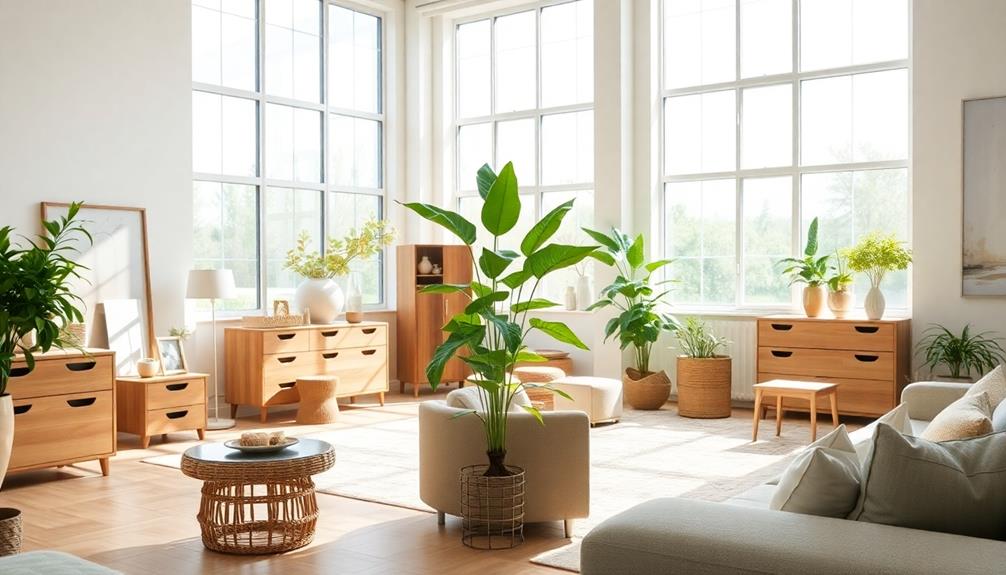
When you're considering new furniture, it's crucial to verify the materials used, as some options can greatly impact your indoor air quality. Engineered woods, like particleboard and MDF, often have higher offgassing potential, releasing VOC pollution that can affect sensitive individuals.
To help you make informed decisions, here's a quick comparison:
| Material Type | Offgassing Potential | Tips for Purchase |
|---|---|---|
| Solid Wood | Low | Look for FSC-certified options. |
| Plywood | Moderate | Confirm glue used has low VOCs. |
| Particleboard/MDF | High | Prepare sealants before assembly. |
Additionally, check the return policy of the furniture before purchasing; you want to verify you can return items if offgassing is excessive or problematic. If you're sensitive to VOCs, consider buying one piece at a time, allowing each to offgas adequately before introducing more furniture. Finally, identify a separate area, like a garage, to let high offgassing items breathe away from your living spaces. These pre-purchase considerations can greatly reduce your exposure to harmful offgassing effects.
Reducing Off-Gassing After Purchase
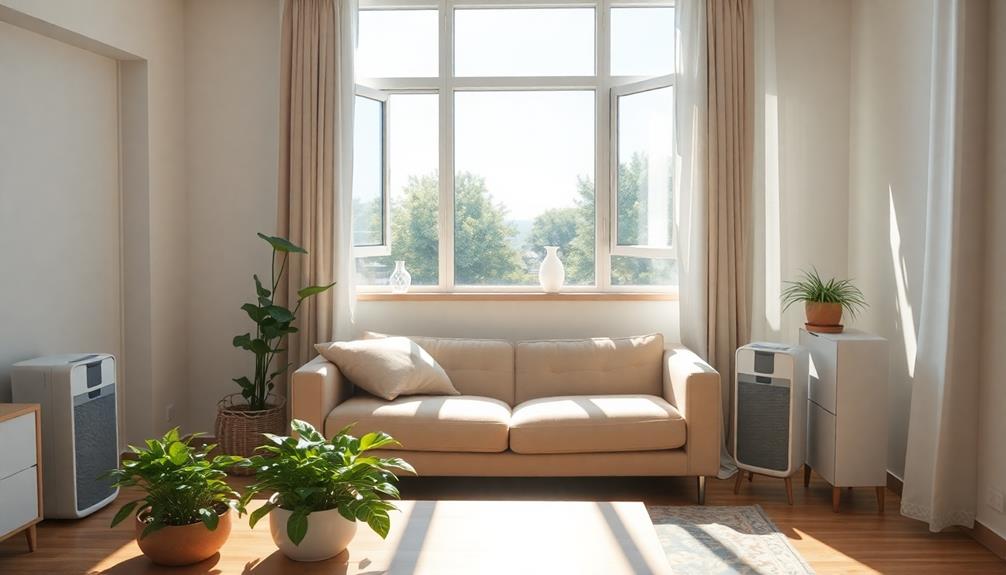
After making an informed purchase, it's important to take steps to minimize off-gassing from your new furniture.
Start by allowing the furniture to air out in a well-ventilated area, like a garage or spare room, for a few days to weeks. This helps reduce your exposure to VOCs before bringing it indoors. Increased awareness about cold medications overview can also guide you in selecting safe options for your health during this period.
Increase airflow and ventilation by opening windows and using fans to direct air toward open spaces, which can greatly speed up the off-gassing process.
Consider utilizing heat sources, such as placing the furniture in a warm room, since higher temperatures can enhance the release of VOCs. Additionally, employ absorbent materials like activated charcoal or zeolite nearby to capture and neutralize these harmful compounds, improving your indoor air quality.
For ongoing management, regularly clean surfaces with a vacuum equipped with a HEPA filter.
Also, consider using air purifiers designed to filter out VOCs to maintain better indoor air quality.
Strategies by Furniture Type
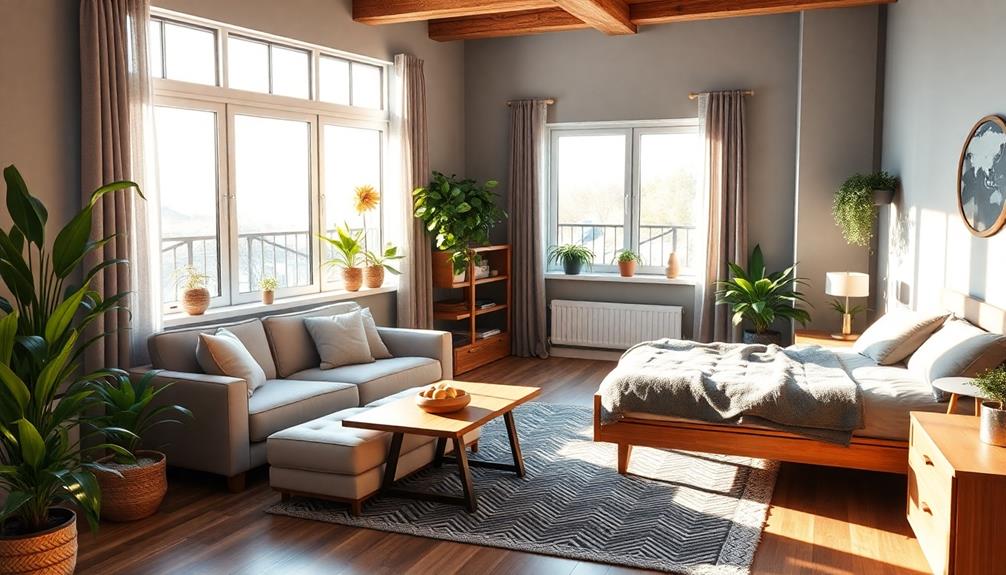
Different types of furniture require specific strategies to effectively reduce off-gassing. For bed frames, disassemble the components and place them in a properly ventilated area. Applying sealants like shellac to exposed surfaces can greatly reduce formaldehyde emissions and enhance off-gassing, similar to how the best HEPA filter vacuums trap harmful particles from the air. Additionally, bleaching wood furniture at home can help to lighten both the appearance and potential lingering odors associated with off-gassing. It’s important to follow manufacturer guidelines when treating surfaces, as improper application can damage the finish. Regularly airing out rooms where new furniture is placed also aids in maintaining indoor air quality.
When airing out mattresses, allow them to breathe in a sunny spot for several hours and consider using activated carbon cloth to absorb lingering volatile organic compounds (VOCs).
Couches benefit from regular vacuuming to eliminate dust and allergens. Using temporary encasements can help contain off-gassing during the initial period.
For cabinets and shelving, often made from particle board, treat them by sealing edges and surfaces with specialized sealants to minimize VOC emissions while increasing airflow around them. For added durability and aesthetic appeal, you can consider painting the cabinets or shelving after sealing. It’s important to research **how to paint laminate surfaces** properly to ensure the paint adheres well and doesn’t chip over time. Sanding lightly and applying a high-quality primer can significantly improve the finish and longevity of your painted surface.
Upholstered items, including chairs, can be improved with extractor cleaning methods. Place these pieces in a space with consistent airflow to greatly enhance the off-gassing process.
Community Insights and Tools
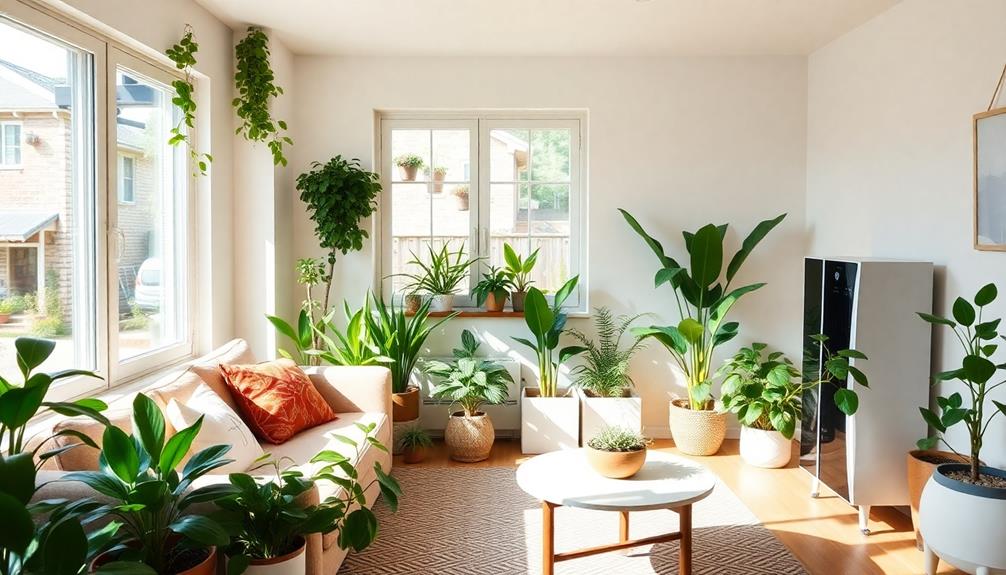
Community insights can be invaluable when tackling off-gassing from new furniture. Many community members recommend placing your new furniture in a well-ventilated space, like a garage or outside in the shade, for about a week. This allows VOCs to dissipate more effectively.
You can enhance the off-gassing process by utilizing fans to boost air circulation around the furniture. Additionally, consider placing activated charcoal or zeolite bags nearby; these can absorb odors and VOCs, helping to improve indoor air quality.
Engaging in online forums can also provide you with practical insights based on community feedback, including specific brands or types of furniture that tend to have lower off-gassing rates.
Regularly airing out rooms by opening windows and using air purifiers with activated carbon filters can further maintain cleaner air while your new furniture is off-gassing.
Frequently Asked Questions
How to Expedite Off-Gassing?
To expedite off-gassing, increase air circulation by opening windows and using fans. Place items in a warm, well-ventilated area, and consider using absorbent materials or air purifiers to reduce odors and VOCs effectively.
How to Speed up Off-Gassing Wood Furniture?
Isn't it frustrating when new furniture smells? To speed up off-gassing, you've got to increase air circulation, place it outdoors, and keep the space warm. Try using absorbent materials to neutralize lingering odors, too.
How Long Does It Take for Furniture to Stop Off-Gassing?
It usually takes furniture several weeks to a few years to stop off-gassing. Factors like material type and environmental conditions play a big role, so keep an eye on your indoor air quality during this time.
Does Baking Soda Absorb Off-Gassing?
Yes, baking soda absorbs off-gassing odors effectively. Sprinkle it generously, let it sit for 24 hours, then vacuum it up. Combine this with good ventilation, and you'll enhance odor reduction even more.
Conclusion
To sum up, tackling off-gassing doesn't have to feel like a Herculean task. By choosing the right furniture and following simple strategies post-purchase, you can create a healthier living space. Remember, patience is key—like waiting for a fine wine to breathe. Don't hesitate to share your experiences with others; your insights can be invaluable. With these tips, you'll not only speed up off-gassing but also enjoy your furniture sooner and safer.
